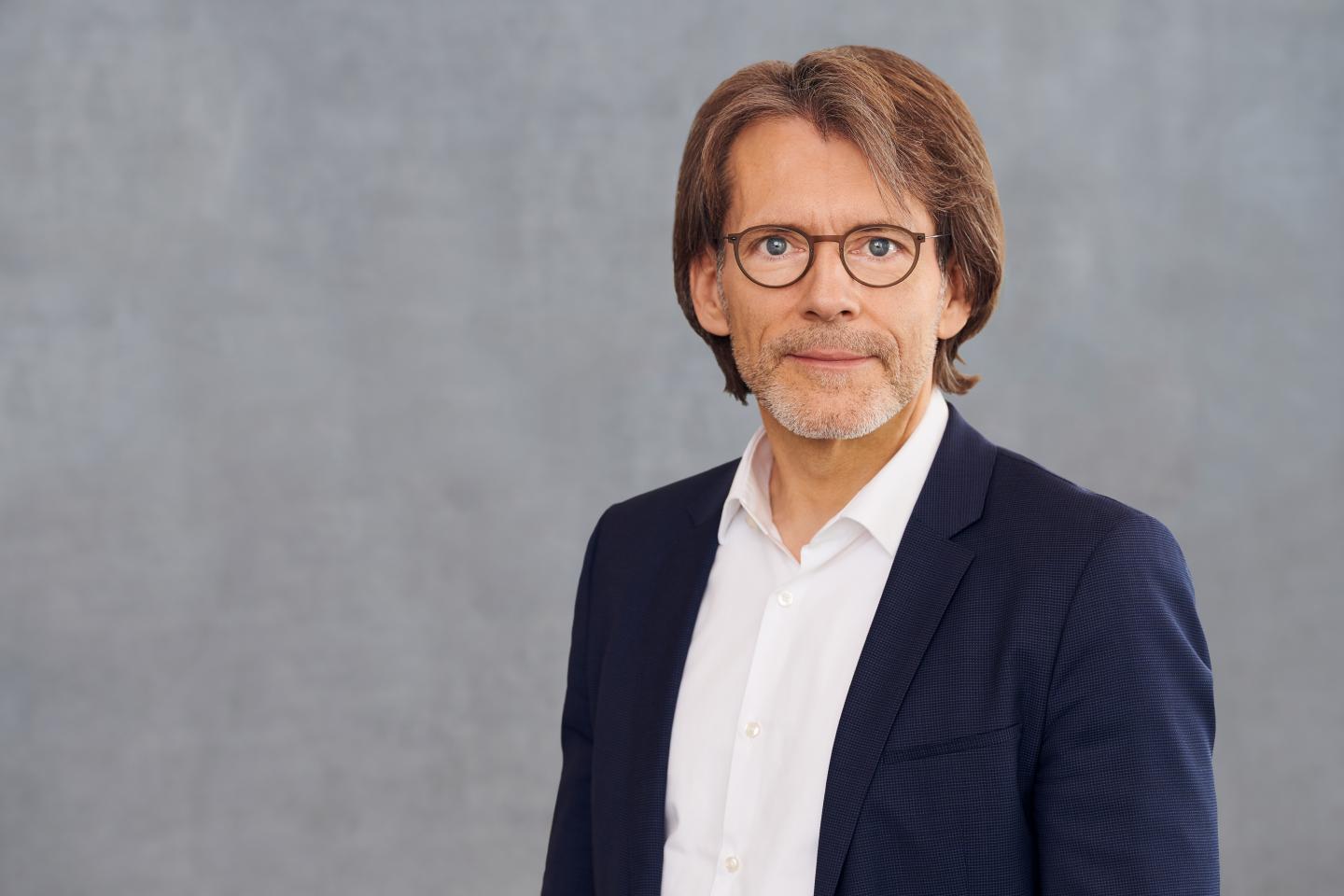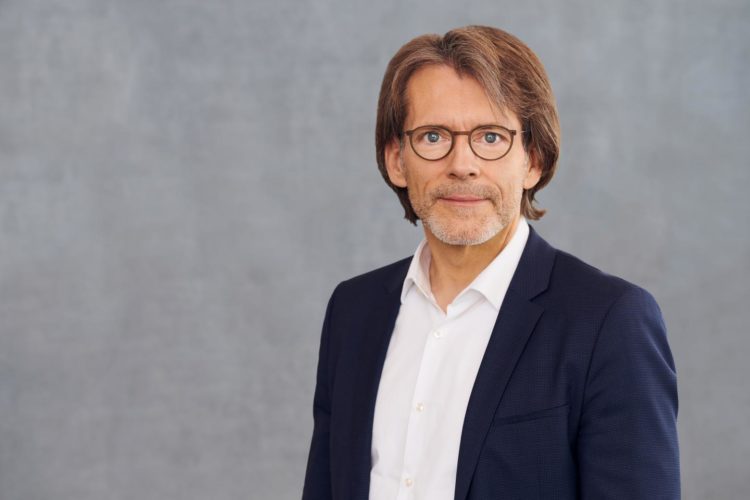Research earns top Sartorius/Science prize for young scientist

Credit: Sartorius AG
Joana Neves is the 2019 grand prize winner of the Sartorius & Science Prize for Regenerative Medicine & Cell Therapy, for work that offers a promising approach to improve the outcome of regenerative stem cell-based therapies aimed at delaying age-related degenerative diseases.
Using the fruit fly Drosophila as a model organism, Neves discovered an evolutionarily conserved mechanism of tissue repair – immune modulation by the protein MANF – which she harnessed to restore visual function in old, blind mice with retinal disease.
The findings identify and help to address a major challenge imposed by the natural aging process, which has limited the clinical application of regenerative medicine approaches to treat those most likely to suffer from chronic and often debilitating degenerative conditions – elderly patients.
“Joanne Neves was motivated by the roadblocks that limit the success of regenerative therapies in older patients. She translated insight gained in fruit flies to an intervention in blind mice that restored visual function. Her work has the potential to improve outcomes in regenerative medicine,” said Valda Vinson, research editor for Science.
Neves’ prize-winning essay, “Aging eyes and the immune system,” will be published in the March 13 issue of Science.
“I am convinced that biological aging is the biggest biomedical challenge of this century and that finding ways to intervene, to delay or reverse this process is the most promising approach to promote human health,” said Neves.
One way to stave off the inevitable effects of aging is through novel regenerative stem cell-based therapies, which promise the ability to repair or rejuvenate aged or diseased tissues and organs using stem cells.
Stem cells are the body’s raw cellular resource and progenitors from which every specialized human cell is derived. Some can be guided into becoming specific cells that can be transplanted and used to repair tissues. However, while regenerative medicine is advancing quickly and therapies are increasingly rolling into clinical trials, Neves said the overall benefits for human health remain limited, particularly in the ill and elderly.
Aging and degenerative diseases are often associated with the loss of ability for many tissues to regenerate, in part because the patients often being treated have tissues lacking an intact repair response capable of sustaining the functional integration of the transplanted cells, said Neves. Because of this, developing truly successful regenerative therapies has remained challenging.
Neves identified this significant roadblock in her work to apply stem-cell based interventions to treat degenerative retinal disease in fruit flies and found it to be due to the inflammatory environment often present in aged and diseased tissues. Finding a way to resolve chronic inflammation and promote an environment supportive of repair could provide an efficient and effective way to make the outcome of stem cell-based therapies more successful.
“[This] work led to the identification of MANF as an immune modulatory molecule with pro-repair activity that exists in circulation in our bodies but lost as we age,” said Neves.
Neves discovered that the protein MANF is a critical part of a conserved biological process necessary for limiting age-related inflammation while promoting tissue maintenance in young organisms. Using MANF intervention alongside stem-cell based photoreceptor replacement therapies, she was able to greatly improve visual function in mice, highlighting the clinical utility of the approach.
“[This] work is the proof of principle demonstration that immune modulatory interventions can be effective strategies to improve the success of regenerative therapies applied to aged and diseased organs,” said Neves.
Neves earned undergraduate degrees from NOVA University in Lisbon, Portugal and a Ph.D. from the Pompeu Fabra University in Barcelona, Spain. After completing a postdoctoral fellowship at the Buck Institute for Research on Aging in California, Neves started her lab in the Instituto de Medicina Molecular (iMM) at the Faculty of Medicine, University of Lisbon in 2019. She and the two other prize finalists will be recognized during an award ceremony at the Life Science Festival on June 3-4 in Goettingen, Germany.
“I always wanted to do research that could have a real impact on peoples’ lives. The best way to do that is identifying a clinical problem that is limiting the success of current therapeutic approaches and search for points of intervention that can change the success of these interventions,” said Neves
“We are living in the bio-century, and at Sartorius our goal is to enable new life-science based discoveries that can be translated quickly into effective patient care. With technologies, platforms and partnerships we work for a common goal: better health for more people. It’s an honor for Sartorius to celebrate the exceptional scientists who have achieved remarkable results at the forefront of stem cell research that opens doors for further progress in healthcare for the 21st century,” said Sartorius CEO, Dr. Joachim Kreuzburg.
Established in 2017, the Sartorius & Science Prize for Regenerative Medicine and Cell Therapy is an annual prize geared toward researchers focused on basic or translational research that advances regenerative medicine and cell therapy, including cell-, gene-, or immunotherapy, tissue engineering, and materials engineering. The winner is awarded $25,000 and publication of their essay in Science.
2019 Finalists
Arun Sharma, for his essay “Stem cells to help the heart.” Sharma earned his undergraduate degree from Duke University and a Ph.D. from Stanford University. Following a postdoctoral fellowship at the Harvard Medical School, Sharma is now a senior research fellow jointly appointed at the Smidt Heart Institute and Board of Governors Regenerative Medicine Institute at the Cedars-Sinai Medical Center in Los Angeles, California. His research uses human induced pluripotent stem cells combined with CRISPR-Cas9 genome editing to develop in vitro platforms for cardiovascular disease modeling and drug cardiotoxicity assessment.
Adam Wilkinson, for his essay “Hope for hematological diseases.” Wilkinson received his undergraduate degree from the University of Oxford and a Ph.D. from the University of Cambridge. He is currently completing a postdoctoral fellowship at Stanford University, California, where he is studying normal and malignant hematopoietic stem cell biology with the aim of improving the treatment of hematological diseases.
###
About Sartorius
The Sartorius Group is a leading international partner of biopharmaceutical research and the industry. With innovative laboratory instruments and consumables, the Group’s Lab Products & Services Division concentrates on serving the needs of laboratories performing research and quality control at pharma and biopharma companies and those of academic research institutes. The Bioprocess Solutions Division with its broad product portfolio focusing on single-use solutions helps customers to manufacture biotech medications and vaccines safely and efficiently. The Group has been annually growing by double digits on average and has been regularly expanding its portfolio by acquisitions of complementary technologies. In fiscal 2019, the company earned sales revenue of some 1.83 billion euros. At the end of 2019, more than 9,000 people were employed at the Group’s approximately 60 manufacturing and sales sites, serving customers around the globe.
About AAAS
The American Association for the Advancement of Science (AAAS) is the world’s largest general scientific society and publisher of the journal Science as well as Science Translational Medicine, Science Signaling, a digital, open-access journal, Science Advances, Science Immunology, and Science Robotics. AAAS was founded in 1848 and includes nearly 250 affiliated societies and academies of science, serving 10 million individuals. Science has the largest paid circulation of any peer-reviewed general science journal in the world. The non-profit AAAS is open to all and fulfills its mission to “advance science and serve society” through initiatives in science policy, international programs, science education, public engagement, and more. For the latest research news, log onto EurekAlert!, the premier science-news Web site, a service of AAAS. See http://www.
Media Contact
Walter Beckwith
[email protected]
202-326-6799





